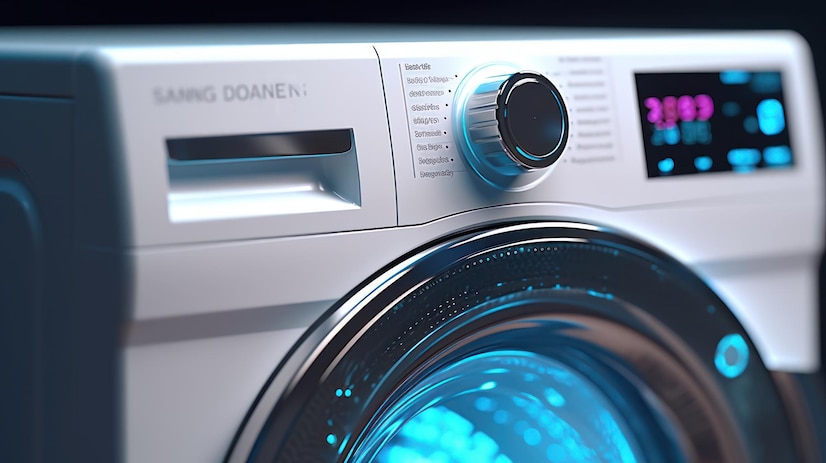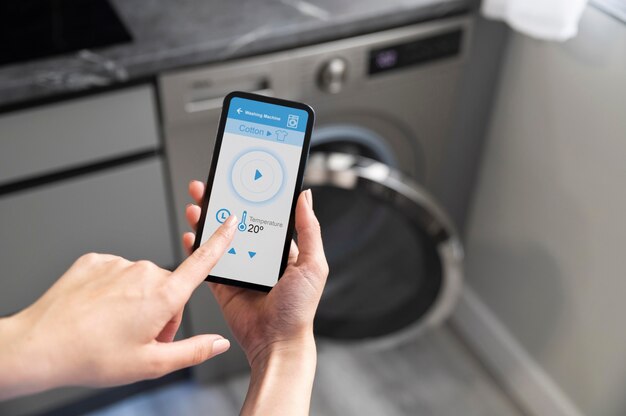In a world driven by computing power, parallels between traditional devices and computers become intriguing. Exploring the intricate mechanics of modern technology, the question arises: Is a washing machine a computer?
So, this article delves into whether the washing machine’s advanced technology and programmability qualify it as a form of computer, raising intriguing points about the evolving nature of everyday appliances.
Let’s learn more about it!
Is a Washing Machine a Computer?
Yes, a washing machine may be considered a kind of computer. It has a microprocessor that controls all of the functions of the washing machine.
The classification of a washing machine as a computer hinges on the interpretation of what defines a computer. While washing machines incorporate microprocessors, sensors, and programming to manage cycles and settings, their primary purpose remains laundry-related.
Unlike general-purpose computers, washing machines lack the versatility and computational complexity associated with traditional computers. However, labeling them as specialized computers tailored for a specific task is plausible.
Ultimately, whether a washing machine is considered a computer depends on the perspective taken – whether it’s the complexity of their operations or the differentiation between specialized and general-purpose computing.

The Evolution of Washing Machines
The history of washing machines is a fascinating journey that reflects not only advancements in technology but also the changing dynamics of domestic life.
From the arduous labor of manual washing to the convenience of today’s automated appliances, the evolution of washing machines serves as a testament to human innovation and the desire for efficiency.
Manual methods: A glimpse into the past
The earliest methods of washing clothes involved strenuous manual labor. People would gather by rivers or streams, vigorously scrubbing clothes against rocks to remove dirt and stains.
As societies evolved, so did the techniques: from pounding clothes with wooden beaters to utilizing washboards to agitate fabrics more effectively.
The dawn of mechanization
The Industrial Revolution marked a turning point in the evolution of washing machines. The first mechanical washing machines emerged, powered by water wheels or steam engines.
These contraptions mechanized the scrubbing and rinsing processes, making them less physically demanding for individuals.
From ringer washers to electric machines
In the late 19th and early 20th centuries, ringer (wringer) washers became popular. These machines featured hand-cranked wringers that squeezed excess water from clothes, reducing the need for manual wringing.
The integration of electric motors further enhanced the efficiency of these machines, heralding a new era of washing convenience.
Automatic washing machines: A leap forward
The mid-20th century witnessed the emergence of automatic washing machines, a significant breakthrough in the history of laundry.
These machines introduced automated agitating, rinsing, and spinning cycles, minimizing user intervention. The integration of timers and dials allowed users to preset wash durations and water temperatures.
The digital revolution and beyond
With the advent of electronics and digital technology, washing machines underwent a transformational shift. Electronic controls replaced mechanical knobs, offering more precise control over cycles and settings.
The inclusion of sensors enabled machines to detect factors such as load size, fabric type, and water hardness, resulting in tailored wash cycles for optimal results.
The smart washing machine era
In recent years, washing machines have become part of the broader Internet of Things (IoT) ecosystem.
Smart washing machines are equipped with Wi-Fi connectivity and smartphone apps, allowing users to monitor and control cycles remotely.
These machines can even send notifications when a cycle is complete or if an issue is detected.
Enhanced functionality through sensors
One of the most significant advancements in washing machine technology is the integration of sensors. These sensors detect variables such as water levels, water temperature, and fabric types.
This data is then used to optimize washing parameters, ensuring that clothes are cleaned effectively while conserving water and energy.
Sensor-driven technology has elevated washing machines from basic cleaning devices to sophisticated appliances that cater to specific user needs.
Is a Washing Machine an Embedded Computer?
Yes, a washing machine may be considered an embedded computer. It is a specialized computer system that is designed to control one or more specific functions in a larger system.
In the case of a washing machine, it would be responsible for monitoring and controlling all of the various motors, pumps, valves, and sensors that are used to wash clothes.
It would also be responsible for sending feedback to the user about the status of the wash cycle and any errors that may occur.
Read more: Are Washing Machines Considered Robots?

Comparing Washing Machines to Computers: Unraveling the Parallels
In a world where technology’s touch is evident in even the most mundane objects, the similarities between washing machines and computers might appear surprising at first glance.
Yet, beneath the surface, these seemingly disparate entities share more in common than one might imagine.
Components and functionalities
At their core, both washing machines and computers comprise a set of essential components that enable them to perform their respective tasks.
While the functions they execute might differ vastly, the underlying mechanisms share striking similarities. Consider, for instance, the way both systems handle data:
- Microcontrollers and Embedded Systems: The heart of both washing machines and computers lies in their microcontrollers and embedded systems. These small but powerful devices serve as the brain, orchestrating various processes and functions. In computers, microcontrollers interpret and execute instructions, while in washing machines, they process input signals to initiate cycles, adjust temperatures, and control spin speeds.
- Data Processing: Computers are renowned for their data processing prowess. They excel at crunching numbers, manipulating information, and performing intricate calculations. Interestingly, modern washing machines have also evolved to engage in data processing. When you select a wash cycle, the machine’s microcontroller processes your input, along with data from sensors that detect factors like load size and fabric type. This information is then used to optimize the washing process, adjusting water levels, temperature, and agitation patterns for the best outcome.
- Output and Interaction: Both systems facilitate interaction and output. Computers generate visual output through monitors or screens, and washing machines provide visual feedback through digital displays. In both cases, these outputs are designed to convey information, whether it’s the progress of a laundry cycle or the results of a complex calculation.
Differences and limitations
While the similarities are intriguing, it’s crucial to recognize the distinctions that set washing machines apart from traditional computers.
These differences highlight the specialized nature of washing machine tasks and underscore the limitations of comparing them to their computational counterparts.
- Task Specificity: Washing machines are engineered to excel at a specific task: cleaning clothes. Their functionalities are tailored to this singular goal, encompassing cycles, water levels, and agitation patterns. In contrast, traditional computers are designed for general-purpose computing, capable of handling a wide array of tasks ranging from calculations to graphics rendering.
- Complex Algorithms: Computers are renowned for their ability to execute complex algorithms and processes. They can solve intricate mathematical equations, simulate real-world scenarios, and facilitate advanced data analysis. While washing machines do perform data processing, their algorithms are highly specialized and tailored to optimize laundry processes. This specialization limits their ability to handle the diverse range of tasks that traditional computers can manage.
- General-Purpose Programming: Computers boast the ability to be programmed for virtually any task, thanks to their general-purpose nature. Programmers can create intricate software applications and algorithms that cater to diverse needs. In contrast, washing machines lack this general-purpose programming capability, relying on pre-programmed cycles and functionalities that cater solely to laundry-related activities.
Conclusion
So, is a washing machine a computer? In a sense, yes—they embody computational capabilities within their framework.
However, in the broader context, they are computational appliances engineered to excel at their primary function while harnessing the power of computing to do so more efficiently.
As technology evolves, the boundaries between appliances and computers will likely continue to blur, prompting you to rethink and redefine the very nature of the devices that shape your lives.







